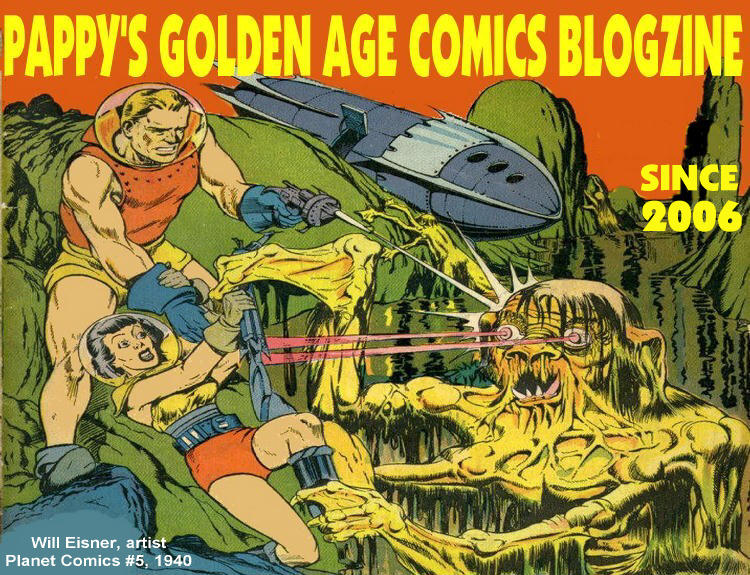I’ve been waiting to show work by Pinajian, because he figured in a big art story a couple of years ago. A decorated war veteran, he lived with his sister after the war. He painted landscapes and stored them in their house. He asked that they be disposed of in the county landfill after his death. A relative refused to let the paintings be hauled away, and had them examined by an art historian, Peter Hastings Falk. Falk pronounced Pinajian a brilliant abstract landscape artist, heretofore “undiscovered.” The story made some national news programs on television and in newspapers. At the time the story broke Pinajian, who died in 1999, had been dead for over a decade. As soon as I saw his name I knew that as a comics fan I felt I knew more of Art Pinajian’s early work than all of the art community who pronounced him an unknown, eccentric genius.
Although I knew some of his backstory from his days in comics, the story of his landscapes is one of those tales of some poor artist slaving away in obscurity, starving in a garret. Never recognized in life, suddenly revered in death.
***********
Some of Pinajian’s early comic book work, featuring Madam Fatal. I showed these stories in 2010. Click on the thumbnail:























































